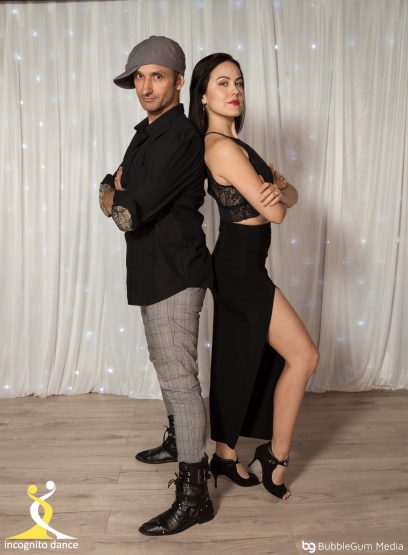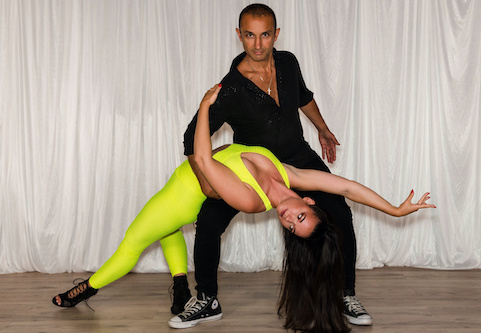The Best Strategy To Use For Dance San Francisco
Wiki Article
Dance San Francisco Fundamentals Explained
Table of ContentsSome Known Details About Dance San Francisco Our Dance San Francisco DiariesThe Best Strategy To Use For Dance San FranciscoAbout Dance San Francisco
Allow's think of Salsa dancing and songs as a large Tree that looks like this: Salsa is danced world-wide while many technological elements of the dance are the exact same across styles (6 actions over 8 beats danced on a quick-quick-slow or slow-quick-quick rhythm), there are a number of "characteristic" features of the main styles of Salsa that identify one from the various other.Couples taking part in a Gambling enterprise Rueda dance all relocations in unison as called by a Leader. Distinct features of Cuban design salsa are round turn patterns (with "break back" actions on matters 1 and 5) as well as body motion motivated by conventional Afro-Cuban folkloric dances. Distinguishing functions of Cali design salsa fasts and detailed footwork, danced with a solid hand hold link in between companions.
The origins of the style are a subject of argument, yet it is said that New York style Salsa dancing came from the 1960's because of the influx of Latin American emigrants after the Cuban Change (salsa dancing sf). Eddie Torres is one of the most well understood New York design professional dancer, being nearly globally credited with popularizing the style to dance centres beyond New york city
The standard rhythm of "On-2" is slow-quick-quick. The "youngest" of the styles of Salsa, L.A (https://allmyfaves.com/dancesf?tab=dancesf). Design (some individuals have actually called it "West Coastline" design) ended up being popular in the 1990's and has its beginnings in ballroom (Mambo, Swing and Cha, Cha, Cha). Turn patterns lead and comply with strategies are greatly affected by these designs, with the Cross Body Lead being the cornerstone of the design
The Buzz on Dance San Francisco
Style are implementation of turn patterns and numbers in the "port", with the break steps on counts "1" and "5". While Salsa songs has solid origins in Cuban, Colombian and Puerto-Rican folkoric practices, it can not be discounted that all Afro-Latin and Latin American cultures have actually added to modern Salsa music as we know it today.

There she came to be friends with the Nuyorican artists, and her partnerships with them and her time with the Fania All-Stars resulted in over 50 cds (of joint and solo job). Many thanks to the net and ease of access to details, the appeal of Salsa music, dance and culture has spread out like wildfire over the last thirty years and even after that modern Salsa musicians proceed to commemorate the Establishing Dads and Mother of Salsa.

Some Known Incorrect Statements About Dance San Francisco
differentiating qualities of Salsa songs are: 4/4 time signature, Kid Clave and Tumbao rhythms, Montuno Piano Unless you have a background in songs, the above 3 attributes probably suggest absolutely nothing to you. A less complicated way to explain Salsa songs is exactly how it does NOT seem like various other kinds of Latin American music.
It's time for lessons. With so many workshops around and different designs to pick from, where does a total beginner begin? The majority of all new professional dancers pick to find out L.A. "On-1" style slotted Salsa styles are the most widespread in North America (with some exceptions of some city centres that still primarily accept Cuban and Puerto Rican designs) and L.A.
.A. Design will rapidly instruct you the principles of Salsa timing, weight transfer and turn pattern implementation. Numerous professional dancers, as soon as they have actually had a year or 2 of dance L.A. Design Salsa under their belts, "switch" to New york city style in order to expand their dancing vocabulary; yet several professional dancers determine to stay with just one design of Salsa and enjoy their time on the dancing flooring in that specific design. salsa dancing sf.
Style and New York City Style all being danced in the exact same club, with numerous of the dancers being able to change from one design to the other from one track to the next. salsa dancing sf. Regardless of which style you select it's vital to adhere to that style till you're really comfy with the basics of timing, body rhythm and structure move implementation before taking into consideration "changing" designs (if you want to)
As soon as you start lessons prepare to devote energy and time to finding out just how to dance generally it takes a full rookie (i. e., somebody More about the author with little or no dance experience) concerning 6 months of actively taking lessons and heading out and exercising at the very least two times a week to reach a factor where pattern implementation begins to feel "natural".
Report this wiki page